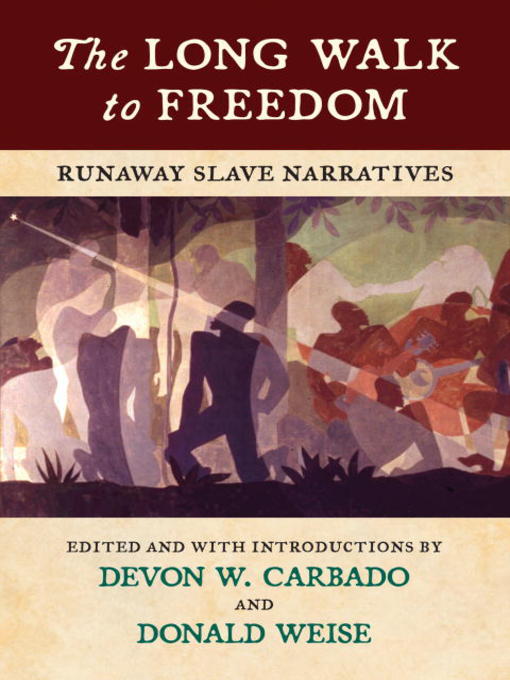
The Long Walk to Freedom
Runaway Slave Narratives
کتاب های مرتبط
- اطلاعات
- نقد و بررسی
- دیدگاه کاربران
نقد و بررسی

June 11, 2012
The intensity of the desire for freedom drives these narratives by fugitive slaves. The dozen excerpts from published accounts mostly unfamiliar to general readers are organized into thematic areas—yearning for freedom, family situations, religious inspiration, and extreme measures taken to liberate themselves—editors Carbado, UCLA professor of law and African-American studies, and Weise, editor-in-chief of Magnus Books, underline the commonalities of the American slave experience yet allow each fugitive his own voice. Villains in the form of owners, traders, bounty hunters, and treacherous blacks abound; gruesome descriptions of whippings and other tortures punctuate many of the tales. Heroes and heroics also emerge: Quakers and other antislavery activists assisted runaways; fugitives walked for days without food, fought off dogs and wolves, and even after capture managed to escape again. Most of the fugitives note that the slaveholders were “professing Christians,” though one fugitive cites the Bible’s prohibition against returning escaped slaves. Stevenson’s afterword places the narratives in historical context, where a white man could sell his own children by a slave to escape “social ostracism.” It may give readers nightmares, but this book needs to be read. Illus.

June 15, 2012
Excerpts from the narratives of runaway slaves organized by the principal reason for the flight to freedom. In some ways, this is an unnecessary volume, as the narratives are widely available elsewhere, in print and online. But editors Carbado (Law and African American Studies/UCLA) and Magnus Books editor in chief Weise have sharpened and particularized the focus, allowing readers a chance to experience the stories from a fresh perspective. After a brief introduction--where we learn that most runaways didn't head north but instead to southern cities, hoping to disappear into anonymity--the editors step aside and let these remarkable men and women tell their own stories. Carbado and Weise arrange the escapes by motive (recognizing that no such radical act has a single reason): runs for freedom, family, religion and "by any means necessary," a sort of catchall category. Included are the stories of Moses Roper, who found his mother years later (she didn't initially recognize him); James Curry, who writes about brutal floggings; Bethany Veney, who relates how she never again saw her husband; Isaac Williams, who battled wolves during his escape; and William and Ellen Craft, whose bold escape featured cross-dressing and passing as white on public transportation. Among these perhaps lesser-known stories are also selections from the famous narratives of Frederick Douglass, Nat Turner and Harriet Jacobs. Many of the cruelties remain horrifying to read. Emerging as true humanitarian heroes are the Quakers, who invariably helped when others would not. A useful one-volume selection featuring grim but inspiring tales.
COPYRIGHT(2012) Kirkus Reviews, ALL RIGHTS RESERVED.

June 1, 2012
This collection contains excerpts from 12 narratives by former slaves, who escaped to freedom. Some of them are classics, such as those by Frederick Douglass, Harriet Jacobs, and William Craft. Others have not been in print for approximately 100 years (although all are available on the Internet in various forms). Carbado (law & African American studies, Univ. of California, Los Angeles) and Weise (publisher, Magnus Books) provide an introduction that covers the history of slave resistance and how slave narratives became the foundation of African American literature. However, the editors gloss over the influence of white abolitionists in the editing and publishing process and the general popularity of melodramatic literature in the early to mid-19th century. The excerpts are organized by theme: "Running To Be Free," "Running Because of Family," "Running Inspired by Religion," and "Running by Any Means Necessary." These categories help to contextualize each within the larger framework of the history of slavery and abolitionism. VERDICT Although the narratives are available online, this book will provide a succinct collection for high school or beginning undergraduates studying the history of slavery in America.--Kathryn Stewart, American Folklife Ctr., Washington, DC
Copyright 2012 Library Journal, LLC Used with permission.

























دیدگاه کاربران